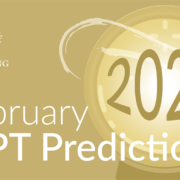Three Tips For Practicing MEE Questions
Three Tips For Practicing MEE Questions
Students often have a lot of questions regarding how to practice MEE questions for the Uniform Bar Exam. These questions typically include everything from whether to actually write out practice essays to timing concerns. In this post, we give you three tips for practicing MEE questions. See what we think are valuable strategies by reading the information below!
Three Tips For Practicing MEE Questions
MEE Practice Tip # 1: Begin practicing essays early on in your bar prep studies.
The best way to excel on the MEE is to complete practice MEE questions. This might seem obvious, but students all too often save practice essay writing for the end of bar prep when they should be completing essays throughout bar prep. Begin practicing essays early on in your bar prep studies to get comfortable with writing answers in the format expected by the MEE. Practice enables you to spot issues, acquaints you with how certain subjects might appear on the MEE, and helps you grasp difficult areas of law.
MEE Practice Tip # 2: Practice your timing to avoid running out of time during the exam.
If you are able to manage your time and complete each MEE within 30 minutes while including the relevant information in your answer, you are on track to pass the MEE. Timing on the MEE is critical, and you must know when to move on from one essay because bar exam administrators will not tell you when to do so. Accordingly, we recommend that you answer each question in the order that the questions appear on the exam, and we recommend that you answer each question immediately after reading the fact pattern. This approach means you’re maximizing the amount of time you spent on each question.
We do not recommend that candidates read through all of the questions before writing their answers; this can take up to 15 minutes and thus reduce the time you’ll have to answer each question! If you think you will end up answering the questions out of order during the exam for some reason (i.e., because of your comfort level with the subject matter presented), you should be sure to complete practice tests in a similar manner. It is important to make sure that you are able to maintain an effective allocation of your time on the exam, at 30 minutes per question.
If time permits, you can try the following to boost your MEE score: (1) identifying exceptions to rule statements at issue and making an argument for such exceptions; (2) adding alternative arguments and counterarguments to those arguments; and (3) checking your answer for proper punctuation, spelling, and grammar. Check out our blog post, What to do with spare time on the MEE, to learn how to enhance your answers.
MEE Practice Tip # 3: Maximize your study time by reviewing highly tested subjects and topics.
There are fourteen subjects in the pool of what might appear on the MEE, and the subjects tested vary from exam to exam. So, you should study each testable subject. However, to maximize your study time, be sure to focus on the highly tested subjects and highly tested topics. Likewise, be efficient and avoid spending too much time on subjects that are unlikely to appear on the exam. Review JD Advising’s MEE Guide for more information about how often each subject is tested, whether subjects are tested by themselves or with another subject, and the highly tested topics for each subject.
1. Highly Tested Subjects
Civil Procedure is the most highly tested subject on the MEE. Subject matter jurisdiction (SMJ) is the most highly tested Civil Procedure topic. Venue is another topic that often appears on MEE questions. You should know that essay graders look for key terms in answers. For example, if venue is tested, you should know the difference between “transfer to a more appropriate forum” and “transfer to a proper venue.”
2. Least Tested Subjects
In stark contrast to Civil Procedure, Conflict of Laws is the least tested subject on the MEE. When Conflict of Laws is tested, it tends to be combined with another subject. Even more, the same topics usually appear repeatedly. For example, at one point when Conflict of Laws is combined with Civil Procedure, the Klaxon doctrine was at issue.
Be sure to commit to memory your subject-matter outlines for areas of law that are highly tested and know that you can supplement your outline by using MEE one-sheets!
Looking to Pass the Bar Exam?
Free Resources:
- 🌟Bar Exam Free Resource Center: Access our most popular free guides, webinars, and resources to set you on the path to success.
- Free Bar Exam Guides: Expert advice on the MBE, the MEE, passing strategies, and overcoming failure.
- Free Webinars: Get insight from top bar exam experts to ace your preparation.
Paid Resources:
- 🏆One-Sheets: Our most popular product! Master the Bar Exam with these five-star rated essentials.
- Bar Exam Outlines: Our comprehensive and condensed bar exam outlines present key information in an organized, easy-to-digest layout.
- Exclusive Mastery Classes: Dive deep into highly tested areas of the MBE, MEE, MPT, and CA bar exams in these live, one-time events.
- Specialized Private Tutoring: With years of experience under our belt, our experts provide personalized guidance to ensure you excel.
- Bar Exam Courses: On Demand and Premium options tailored to your needs.
- Bar Exam Crash Course + Mini Outlines: A great review of the topics you need to know!
🔥 NEW! Check out our Repeat Taker Bar Exam Course and our new premier Guarantee Pass Program!







Leave a Reply
Want to join the discussion?Feel free to contribute!